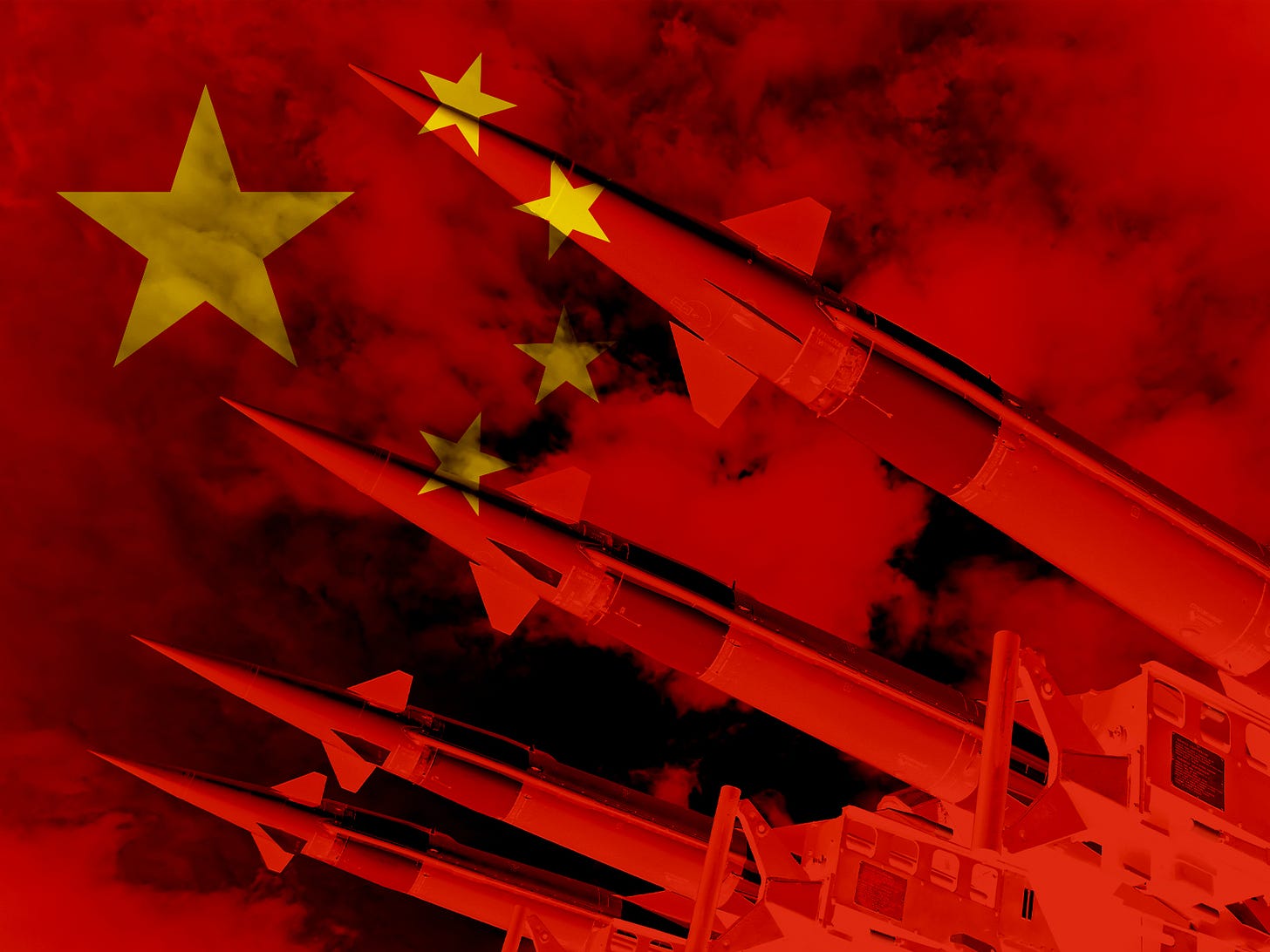China’s New Missile Demands Better Defenses
Sometimes the best offense is a good defense.
Over the weekend, the Financial Times reported that, in August, China tested a hypersonic, low-orbit, nuclear-capable missile. The missile is slower than ballistic missiles but much more difficult to track. According to the report, the missile went into outer space, orbited the earth, and returned while missing its target by about 24 miles. Some experts have noted similarities between this system and one developed but never deployed by the Soviet Union in the 1960s, cautioning that the test isn’t “some fantastic futuristic technology” but a new development within a preexisting weapons program. In a rare denial, China has claimed that the launch was a civilian test of a space plane.
It’s too soon to know the long-term implications of this missile test for Chinese-American relations and the future of war, but there are two conclusions that can be drawn with relative confidence: The previous era of arms control is over; and missile defense must be a priority for the United States.
Mostly overlooked, missile defense has occasionally made its way back onto the national agenda in recent years. The George W. Bush administration withdrew from the Anti-Ballistic Missile (ABM) Treaty in 2001 and, wary of Iran’s developing missile program, reached an agreement with Poland and Czech Republic to base missile interceptors in the two countries, before the Obama administration withdrew from the deal while seeking rapprochement with both Iran and Russia. The Trump administration withdrew from the Intermediate-range Nuclear Forces Treaty, citing repeated and unabashed infringement of its terms by Russia. Although it wasn’t cited as a reason for the withdrawal at the time, China experts, most vocally Eric Sayers, hinted at the obstacles that the treaty created for dealing with China’s rising threat.
Shortly after pulling out of the INF treaty, the administration published its Missile Defense Review (MDR). The document, for the most part, skipped over hypersonic glide vehicles like the one reportedly tested by China. Despite this miss, the MDR got the overall picture of the rising missile threat right, and its executive summary emphasized
that the missile threat environment now calls for a comprehensive approach to missile defense against rogue state and regional missile threats. This approach integrates offensive and defensive capabilities for deterrence, and includes active defense to intercept missiles in all phases of flight after launch, passive defense to mitigate the effects of missile attack, and attack operations during a conflict to neutralize offensive missile threats prior to launch.
One could be forgiven for Cold War déjà vu. During the Cold War, there were two schools of thought regarding missile warfare: One emphasized missile defenses, while the other opted in favor of deterrence. With the exception of the Reagan-era Strategic Defense Initiative, the United States decided that the best defense was offense, and the best way to ensure homeland security was by having second strike capabilities. It worked, by luck or by strategic genius, in the sense that the USSR never launched a nuclear attack.
But the MDR was right to emphasize the importance of developing both offensive and defensive capabilities (although it leaves much to be desired in its recommendations). Its emphasis on using space-based censors and interceptors is vital to preventing a missile attack on the United States. By neutralizing, or at least minimizing, the threat of a successful nuclear attack, the United States becomes less susceptible, if not fully immune to nuclear blackmail. To the degree it can shield allies under a missile-defense umbrella, it will at least partially defang rogue regimes like North Korea and Iran and protect embattled democracies like Israel, Taiwan, and Australia.
Critics have posited that ballistic missile defenses in the United States will lead to a “Fortress America” mentality, weakening America’s commitments to the defense of its allies. It’s a valid concern, which is why missile defense should not come at the cost of offensive capabilities, and it should also be extended to allies.
The current missile defense posture is mostly left over from the Cold War’s second-strike deterrence doctrine, largely neglected during the “holiday from history” period and then by 9/11-era distractions. It is almost entirely reliant on the North American Aerospace Defense Command developed to intercept Soviet ballistic missiles that travel over the North Pole, not hypersonic glide vehicles that, as reported by the Financial Times, could potentially traverse the South Pole. Even then, the existing ballistic missile defense programs are terribly unequipped for the rising threat of ballistic or orbital missiles, in addition to the threats posed by Iran and North Korea, not to mention Russia’s existing missiles. Per a report from the summer, China is acquiring over a hundred new missile silos, with the capacity to house six to twelve missiles each—some of the silos are certainly decoys—a huge boost from the current modest stockpile of a few hundred missiles. The other programs developed in that period are either in early development stages or for theatre use, not homeland defense. America’s current missile defense system has no answer for these threats.
The United States has been slowly waking up to the second nuclear era. Three successive administrations have been updating delivery systems—although, unlike Russia and China, the United States is still not building new warheads. But, just like in the Cold War, American defensive capabilities are lagging. A full, reliable missile defense system remains an unfinished dream, partially due to the deterrence-by-second-strike doctrine of the Cold War.
This must change. Even if China had not successfully tested its missile, the U.S. government still needed to allocate significant resources to the research and development, and eventually acquisition, of missile defense systems. China’s recent test only makes this need more urgent.


